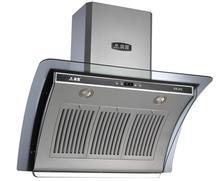 When the huge losses to be faced in fiscal year 2012 are no longer caused by floods, earthquakes, etc., the Big Three consumer electronics companies that once created the Kingdom of Japan’s home appliances are each planning their own way out. Obviously, no one can stop the replacement of an industry, but no one wants to be the next Kodak.
When the huge losses to be faced in fiscal year 2012 are no longer caused by floods, earthquakes, etc., the Big Three consumer electronics companies that once created the Kingdom of Japan’s home appliances are each planning their own way out. Obviously, no one can stop the replacement of an industry, but no one wants to be the next Kodak. Collective sale of real estate to sell their own home base will undoubtedly invite more questions from the market, but the Big Three with tight cash flow have been ignored, and huge real estate is becoming an important source of their funds.
On December 10, Japan’s Kyodo News reported that Hideki Kawai, a CFO at Matsushita Electric, stated that Panasonic plans to raise 1.34 billion U.S. dollars by selling assets and stocks of other Japanese companies in fiscal year 2012. It is understood that the earliest is expected to sell Panasonic Tokyo Shiodome Building in fiscal year 2012, which will bring Matsushita’s cash flow to US$2.43 billion.
Sony and Sharp, who were caught in the same predicament, are also busy with repatriating funds through the use of live assets. Sharp has pledged almost 4.6 billion yuan in loans from the Japanese consortium to pledge equity in almost all fixed assets and panel factories. Sony also plans to sell its 37-story company headquarters building in New York, USA, to get $1 billion in financing.
Panasonic CEO Jinhe Ichihiro once told the media, “Even if there are no special reasons like last year’s major earthquake or flood in Thailand, the sales situation in the second half of the year will be difficult to improve.†In fiscal 2012, Panasonic expects to lose 9.55 billion U.S. dollars. , And for the first time do not give dividends to shareholders, Sharp is expected to net loss of 5.62 billion US dollars. Although Sony has set a profit target of 240 million U.S. dollars, it has already lost 500 million U.S. dollars in the first half of the year.
Throw away non-profitable burdens In addition to selling real estate, throwing out non-profitable burdens is also part of the Big Three's asset-light strategy. Hitachi and Toshiba, who had also hit the Chinese market with television, clearly set an example for the Big Three. In fiscal 2011, when Panasonic, Sony, and Sharp suffered huge losses, Hitachi, which had given up its television business, earned 550 billion yen in profits and Toshiba earned 200 billion yen in profits.
The above-mentioned investor told reporters that “TV has become an unprofitable iron box, and throwing it away is the wisest choice.†Profit is undoubtedly the only standard, and the loss-making TV business is the first to become a burden reduction target.
Panasonic has already established a plan to reduce the scale of its TV business year by year. It plans to cut off its plasma and LCD business and gradually withdraw from flat-panel TVs. Sony expects to surpass 5% profit in television business. In the current fiscal year, it not only increased the proportion of production of the whole machine by Honghong but also reduced the TV model and output. Sharp, which has more than 80% of LCD business, also decided in August this year to reduce TV production by 30%.
At the same time, the panel industry, which is investing a huge amount of money, has been gradually stripped. In fact, everything that does not make money can be severely cut off.
Breakthrough pressures In spite of the loss of loss-making business and the massive layoffs to reduce losses, consumer electronics giants are looking for new high-profit industries to break through on the road to diversification. Chairman Matsushita Daisuke Wenxiong said in January of this year: “No one manufacturer can make money through TV hardware, Panasonic intends to transform from home appliance business to B2B (business-to-business marketing) business.â€
Under the leadership of Tsukasa Ichiro, Panasonic is entering the era of "post-TV". According to report, the new energy and automation equipment business unit will become the new growth point for Panasonic. In addition, large-scale energy-saving household appliances have also become the focus of Panasonic's strength. It is not only the Panasonic family that seeks transformation. In fact, weakening the traditional home appliance business and transforming high-profit business such as new energy, medical imaging, and mobile devices into a common choice for the Big Three.
Solar Street Light is mainly applied in engineering projects. With the advantages of high luminous flux, super long lifespan, average 70% energy save, low maintenance cost and wide color temperature options, it is a perfect replacement for conventional halogen and sodium street light.The Led lamp is made of high- quality aluminum alloy material, with unique air convection design. Easy to install and use,secure and reliable. It has infrared ray inductive probe, when someone is approaching, the light will be all light for 60 seconds. But the people is leaving away, the light will be reduce1/3 lightness automatically, to save the energy.
80W Integrated Solar Street Lights
80W Integrated Solar Street Lights,80W Smart Solar Street Light,80W Solar Street Lights,80W Integrated Solar Street Lamp
Yangzhou Bright Solar Solutions Co., Ltd. , https://www.solarlights.pl